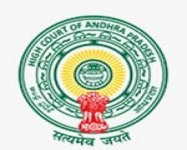ABOUT DISTRICT COURT
The Eastern Chalukyas ruled coastal Andhra Pradesh from 700 to 1200 CE, with their capital in Vengi. Historical evidence of their rule has been found in the nearby villages of Pedavegi and Guntupalli (Jilakarragudem). Eluru then became a part of the Kalinga Empire until 1471 CE before conquest by the Gajapati Empire. In 1515 CE, Sri Krishna Deva Raya captured it. After the fall of the Vijayanagara Kingdom, it was ruled by the Qutb Shahi Dynasty’s Sultans of Golkonda.On 15 April 1925, the West Godavari District was formed with Bhimavaram as its headquarters, and all of the district offices and regional offices were centralized in Eluru.During the Madras Presidency in 1823, the District of Rajahmundry was created.It was reorganized in 1859 and bifurcated into the Godavari and Krishna districts. During British rule, Rajahmundry was the headquarters of Godavari district, which was further bifurcated into the East Godavari and West Godavari districts in 1925.When the Godavari district was divided, Kakinada became the headquarters of East Godavari and Eluru became the headquarters of West Godavari. After the 4 April 2022 bifurcation for a separate Eluru district, Bhimavaram became the new headquarters of the West Godavari district.As of the 2011 Census of India, the West Godavari district has a population of 3,936,966 with 1,091,525 households, which is the 11th most populous district in the state. The district’s population is approximately equal to the population of Croatia and the American state of Oklahoma.The District Court, West Godavari was established in the year 1926. The District has 48 number of Courts, i.e., 12 District Courts, 9 Senior Civil Judge Courts and 27 Junior Civil Judge Courts



